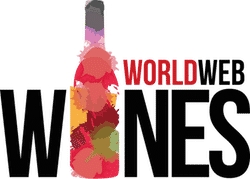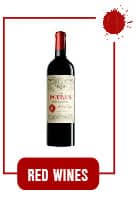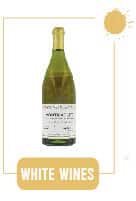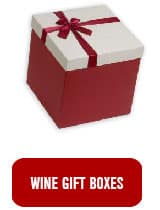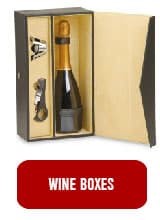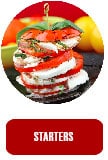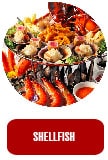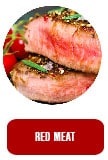No products
Catalog
- 1907
- 1918
- 1924
- 1925
- 1929
- 1931
- 1933
- 1934
- 1937
- 1938
- 1939
- 1940
- 1941
- 1942
- 1943
- 1944
- 1945
- 1946
- 1947
- 1948
- 1949
- 1950
- 1951
- 1952
- 1953
- 1954
- 1955
- 1956
- 1957
- 1958
- 1959
- 1960
- 1961
- 1962
- 1963
- 1964
- 1965
- 1966
- 1967
- 1968
- 1969
- 1970
- 1971
- 1972
- 1973
- 1974
- 1975
- 1976
- 1977
- 1978
- 1979
- 1980
- 1981
- 1982
- 1983
- 1984
- 1985
- 1986
- 1987
- 1988
- 1989
- 1990
- 1991
- 1992
- 1993
- 1994
- 1995
- 1996
- 1997
- 1998
- 1999
- 2000
- 2001
- 2002
- 2003
- 2004
- 2005
- 2006
- 2007
- 2008
- 2009
- 2010
- 2011
- 2012
- 2013
- 2014
- 2015
- 2016
- 2017
- 2018
- 2019
- 2020
France
France has the richest wine heritage of any country, offering something interesting for everyone.
The France - which is the home of Bordeaux, burgundy, Rhone Valley, Champagne and Alsace – is arguably the world's most important wine-producing country.
France has the richest wine heritage of any country, offering something interesting for everyone.
The France - which is the home of Bordeaux, burgundy, Rhone Valley, Champagne and Alsace – is arguably the world's most important wine-producing country.
Subcategories
-
Bordeaux
Red wine, with minimal amount of rosé, accounts for 88% of production.
The vineyards lie around the confluence of the Dordogne and Garonne rivers with the Gironde Estuary. Those vineyards lying to the west of the Garonne and Gironde are deemed to be wines of the Left Bank, those to the east, Right Bank.
The left bank: Saint-Estèphe, Pauillac, Saint-Julien, Margaux, Graves, Sauternes, Haut-Médoc.
The right bank : Saint-Emilion, Pomerol.
-
Burgundy
General information:
Viticultural Burgundy covers five regions:
- Chablis
- Côte de Nuits
- Côte de Beaune
- Côte Chalonnaise
- Maconnais
Total production from 26,500 hectares of vines, which equates to 200 million bottles of wine.
Production is two thirds white wine to one third red wine.
Some answers to your questions about burgundy:
a) the attributes of a great red burgundy ?
- the soil and exposition of the vineyard;
- low yields;
- a hospitable growing season;
- winemaking;
b) Why are the best burgundies prohibitively expensive ?
The pricing of burgundy can be explained entirely by the rules of supply and demand. Truly microscopic quantities of wine offereed by the best producers and a worldwide demand.
c) What are the significant differences in the wines of the Côte de Beaune and Côte de Nuits ?
The red wines of the Côte de Nuits tend to be fuller, slightly more tannic and are characterized by a more earthy, black fruit and exotic character than those from the Côte de Beaune. Indeed, the wines from Côte de Beaune tend to offer slighlty less body, less tannin and seem to filled with aromas and flavors of red fruits.
While the Côte de Nuits produces only a handful of white wines, of which a few are superlative, the Côte de Beaune produces the world's greatest wines from the Chardonnay grape.
-
Champagne
Champagne is a sparkling wine produced from the Champagne region grape grown in France.
Vintage Champagne: made exclusively from grapes grown in a single year, this is produced only in the best years, and is released at about six years of age.
Non-Vintage Champagne: most of the Champagne produced today is Non-Vintage, comprising the blended product of grapes from multiple vintages.
Rosé Champagne: typically light in colour, rosé Champagne is produced either by leaving the clear juice of black grapes to macerate on its skins for a brief time (known as saignée), or by adding a small amount of Pinot Noir red wine to the sparkling wine cuvée.
Recently Disgorged Champagne: R.D. (Recently Disgorged) style was introduced for the first time by Madame Bollinger in 1961, on the 1952 Bollinger Grande Année vintage. Late disgorgement allows the Champagne to retain its freshness, vivacity and fruity expression, despite the ageing.
Blanc de Blancs Champagne: Blanc de Blancs denotes a Champagne made exclusively from Chardonnay grapes.
Blanc de Noirs Champagne: Blanc de Noir Champagnes are made exclusively from black grapes, Pinot Noir (typically) and Pinot Meunier grapes. Bollinger's prestige cuvée Vieilles Vignes Françaises is the lead example.
-
Rhone
The Rhone Valley is a key wine-producing region in the southeast of France.
The north boasts old and highly respected names, such as Hermitage and Cote Rotie. The south is not lacking in prestige with the Chateauneuf-du-Pape appellation is located.
-
Languedoc and Roussillon
Languedoc-Roussillon is a large and diverse wine region in the south of France, covering an area that stretches from Nimes and Montpellier in the east, around the Gulf of Lyon to the Spanish border.
Languedoc is quintessentially French in character, whereas the strong influences of Spanish and Catalan culture are clear across Roussillon.
-
Southwest (France)
The region's wines :
sweet wines from Jurancon;
tannic, full-blooded reds from Cahors and Madiran;
sparkling wines from Gaillac;
and dry whites produced from a wide range of different grape varieties.
-
Jura
Sandwiched between Burgundy in the west and Switzerland in the east, the region is characterized by a landscape of wooded hillsides and the twisting topography of the Jura Mountains.
Along with its unique vin jaune, Jura has been known traditionally for its sweet vin de paille. They do not have an appellation in their own right, but are produced under the Arbois (including Arbois-Pupillin), L'Etoile and Cotes du Jura titles. Vins jaunes may also be made under these appellations, but are at their best under their exclusive Chateau Chalon title.
-
Loire
If you’re looking for white wine alternatives to Chardonnay, discover the Loire Valley wine region.
The Upper Loire
The two principal wines in this area are Sancerre and Pouilly-Fumé.
- Sancerre is the lighter and more vibrant of the two.
- Pouilly-Fumé is slightly fuller than Sancerre and can have attractive flinty, mineral flavors. Pouilly-Fumé can be quite a fine wine when made by a good producer, such as Didier Dagueneau
The central Loire Valley
The central Loire Valley is known for both its white and red wines. The white Chenin Blanc grape makes better wine here than it does anywhere else in the world.
- Coulée de Serrant is a great dessert white wine made from Chenin Blanc
- Vouvray wines come in three styles: dry (sec), medium-dry (demi-sec), or sweet. The best wines of Vouvray, the sweet (moelleux), can be made only in vintages of unusual ripeness, which occur infrequently.
Pays Nantais
Close to the Atlantic Ocean is the third wine district of the Loire Valley — Pays Nantais named after the city of Nantes, right where the Loire River empties into the Atlantic Ocean.
This area is the home of the Muscadet grape.
-
Alsace
Alsace’s wines are unique. The grape varieties that grow there, for the most part, don’t grow elsewhere in France.
Among Alsace’s noble varieties, Riesling is the indisputable king. Elegant and dry, its aromas range from delicate fruit such as lemon, grapefruit, peach and pear to richer expressions such as stewed fruits, flowers and spices. Rieslings from Alsace have abundant freshness, opulence and a rich mid-palate, yet, their racy acidity keeps them exceptionally well-balanced.
Over 90% of Alsace wines are made from white grape varieties. Aromatic and balanced with impressive acidity and structure, these wines are remarkably food friendly.
-
Provence
Provence is a wine region in the far southeastern corner of France, best known for the quality (and quantity) of its rosé wines and for its warm, mild climate.
-
Corse
The island of Corsica produces a wide range of wonderful wines, due, in part at least, to the variety of both soil types and altitudes, as well as the sea-breezes that soften the sun’s heat near the coast.
-
Beaujolais
-
la Savoie
This Alpine region in eastern France was little known until recently. Its gorgeous wines are distinctive and immediately appealing.
This small, hilly protrusion in the Alpine foothills of eastern France juts into the mountainous region where Switzerland meets Italy. It produces some excellent red wines, but mostly whites that are as cool, crystalline and refreshing as a mountain stream.
This transportive quality is a powerful feature of Savoie whites. The leading grapes, altesse and jacquère, are little known outside the region. Other important white grapes include mondeuse blanche, roussanne and chardonnay, along with a host of other indigenous grapes.
-

Vouvray sec 2019 - le Clos Naudin
Domaine du Clos Naudin Vouvray Sec 2019
22,40 CHF 24,85 CHF -10%Reduced price! -

-

Vouvray Demi-Sec 2018 - le Clos Naudin
2018 Philippe Foreau Domaine du Clos Naudin Vouvray Demi-Sec Loire, France
28,65 CHF -

Santenay 1er Cru Clos de la Comme 2014 -...
Françoise et Denis Clair Santenay 1er Cru Clos de la Comme 2014
27,05 CHF -

Corton GC 2012 - Château de Meursault
2012 Domaine du Chateau de Meursault Corton Grand Cru, Cote de Beaune, France
85,00 CHF 100,00 CHF -15%Reduced price! -

-

-

-

-

BANYULS ASPHODÈLES 2013 DOMAINE MADELOC
AOP Banuyls Blanc « Asphodèles » 2013 DOMAINE MADELOC
10,55 CHF 14,05 CHF -25%Reduced price! -

Château La Gaffelière 1996
1996 Chateau La Gaffeliere, Saint-Emilion Grand Cru, France
62,95 CHF 74,05 CHF -15%Reduced price! -

Cote rotie "brune et blonde" 2019 - E. Guigal
Cote rotie "brune et blonde" 2015 - E. Guigal
49,80 CHF 52,45 CHF -5%Reduced price!
100 % in stock
All of our products are avalaible on stock
Quick delivery
Your order will be shipped in 48 hours in a packaging provided for this purpose
Free delivery
Free shipment fees for orders over 1000 CHF (in Switzerland)
Free pickup in Geneva
In order to avoid shipping fees, your order can be picked up directly in our cellars or shop in Geneva
Your fidelity rewarded
2 % off
